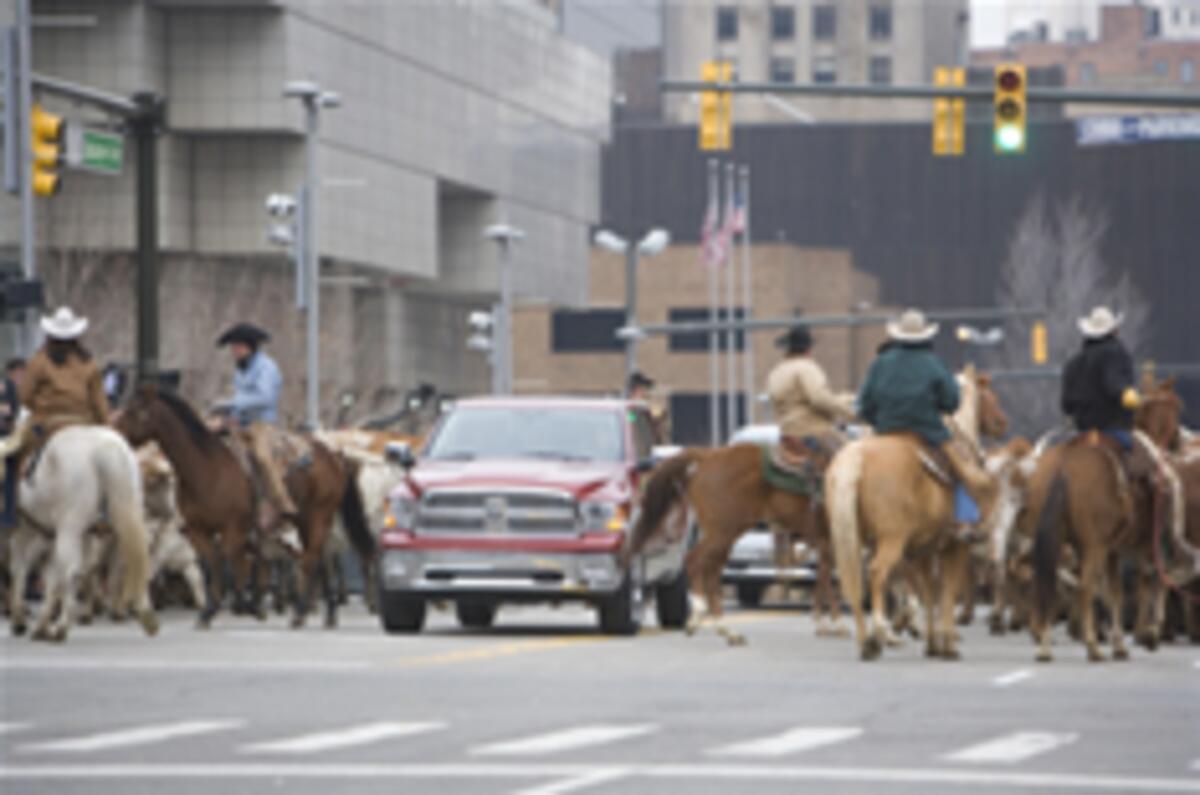Forget the rest of the pretenders - like BMW or Toyota or the Chinese. The first day of the Detroit Motor Show, which for reasons known only to the Yanks is a Sunday, is really about the antics and concepts of the American Big Three – especially now Chrysler is both independent and American owned again following its mid-year divorce from Mercedes.
Chrysler not so convincing
Chrysler was first away on the stroke of 11 am with a press call for its four biggest management men, led by the former Marine and hardware king Bob Nardelli, (he previously ran Home Depot, one of America's biggest and most successful corporations). For a quartet whose job was to reassure us that "the new Chrysler" knows what it is doing and can make a success of it, the body language was rather downbeat. And they were short on the detail, too.Nardelli came across as believable, even fatherly, but he could easily have been talking about aluminium step-ladders or bags of cement instead of cars. There was a lot of predictable talk about "chasing quality" and "listening harder than ever to the customer". Hacks have heard this stuff before, and were rather scathing about the fact that Chrysler was happy to give exact figures for overseas sales (238,000 units, up 15 per cent) because it was a positive, but resorted to "we never give numbers" comment when home sales were mentioned.
Down, but not out
Still, there were positives. Chrysler has some decent cars to sell and seems intent on keeping its three marques (Chrysler, Jeep and Dodge) together. It has the Frankfurt-launched Dodge Journey crossover to sell, and is confident about exports for it. And even though demand for Chrysler models crumpled by as much as 30 per cent in some regions, while the German de-merger was going on, the company still finished 2007 with a smaller erosion of its annual sales (down 3 per cent) than "some rivals' (read Ford). The most bullish bit was a claim that it can more than double foreign sales to around 500,000 cars inside five years, too.
Ramming the point, and the cattle, home
Then the action started. Dodge launched the new, full-sized Ram truck by literally stopping the Detroit traffic and using this all-new Hemi-engined, full-size pick-up (and 10 cowboys on horseback) to drive a mob of 120 long-horn cattle up Washington Boulevard, right outside the Show venue. It takes quite a spectacular to draw several thousand people outside into sub-zero temperatures, but they managed it. The Ram seems a rather unreconstructed Yank model, but some people did get excited about its extra pizzazz and better interior.Then Ford drew us into the Cobo Arena, a former ice-hockey stadium in the show complex. With the earthquake-level introductory music came a progression of pictures of recently launch, recently successful US and European models together - Mondeo first, S-Max third - which was meant to show that Ford's models will grow more international over time. Just like Volvo's or Mazda's or BMWs. That's one of the key cornerstones of new CEO Alan Mulally's reign: do the engineering once, for the world. It's possible now - as it never was before - because legislation and customer requirements are converging.
Ford does it with Verve
Ford showed a handsome looking Verve four-door concept (basis of the new Fiesta, if it's still to be called that) and also brought out the three-door we've already seen. We saw several new performance versions of the Mustang, but the big deal was a new Ford F150 (for 31 years America's best-selling truck), packed with luxury equipment and convenience features like a fold-out step to give access to the load bay. The pick-up as luxury saloon; it could only work in America.Then came the new Explorer SUV concept. Nobody bothers to deny this is the new model of a former stalwart seller - impressive for an extremely handsome shape that neatly keeps its relationship with the soon-to-die current model. Ford used the car to talk about a new range of EcoBoost engines, which will come to Europe too, that replace a big, thirsty engine with a smaller, thriftier, cleaner one. It went down well with the audience. The Explorer concept had a 2.0-litre four-cylinder turbo omparable in torque and power with a 4.0-litre normally aspirated V6, but 25 per cent cleaner and 30 per cent more fuel efficient.There'e a 340 bhp turbo V6 in the pipeline to do the V8 job, and it'll be in the F150 (overwhelmingly a V8 model up to now) by 2010. By then, our own 2.0 litre Mondeo will probably be a 1.6 litre turbo.
The General makes green history
Then we all trooped across to General Motors where CEO Rick Wagoner - fast becoming recognised as the Transatlantic car industry's one true statesman - first brought out a Hummer HX concept which closely resembles a Freelander-sized Hummer H4 for production. It looked great in the flesh: small but powerful. The body was almost completely demountable. You could pull off doors and even wheel arches at will, and the slope-back vehicle could be quickly converted into a pick-up. It's a Land Rover Defender for modern tastes and duties. Wagoner also unveiled, slightly perfunctorily I thought, the long-expected Saab 9-4X crossover, which embodied the good taste and individuality claimed for it. However the big message wasn't about a car at all. It concerned ethanol and its rapidly rising importance as automotive fuel, to a world that must rapidly start reducing its dependence on oil. Wagoner unveiled GM's decision to co-operate with an Illinois-based company that his engineers and chemists believe is on the way to discovering an eco-friendly way of producing "second generation" ethanol, even from household garbage and old tyres. He backed the announcement with reasoning so arresting and so simply powerful that I'd back it to be the Big Thing from Detroit, new cars notwithstanding. Truly, this was history being made.




Add your comment